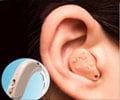With an aging society, the number of persons with hearing loss will grow, increasing the demand for audiologic health care services.

‘The number of adults in the United States 20 years or older with hearing loss is expected to gradually increase from 44 million in 2020 to 74 million by 2060.’





In a study published online by JAMA Otolaryngology-Head & Neck Surgery,
Adele M. Goman of Johns Hopkins University, Baltimore, Md., and
colleagues used U.S. population projection estimates with current
prevalence estimates of hearing loss to estimate the number of adults
expected to have a hearing loss through 2060.The researchers found that the number of adults in the United States 20 years or older with hearing loss is expected to gradually increase from 44 million in 2020 (15% of adults) to 74 million by 2060 (23% of adults). This increase is greatest among older adults. In 2020, 55% of all adults with hearing loss will be 70 years or older; in 2060, that statistic will be 67%. The number of adults with moderate or greater hearing loss will gradually increase during the next 43 years.
"These projections can inform policy makers and public health researchers in planning appropriately for the future audiologic hearing health care needs of society," the authors write.
"Given the projected increase in the number of people with hearing loss that may strain future resources, greater attention to primary (reducing incidence of hearing loss), secondary (reducing progression of hearing loss), and tertiary (treating hearing loss to reduce functional sequelae) prevention strategies is needed to address this major public health issue."
Source-Eurekalert















